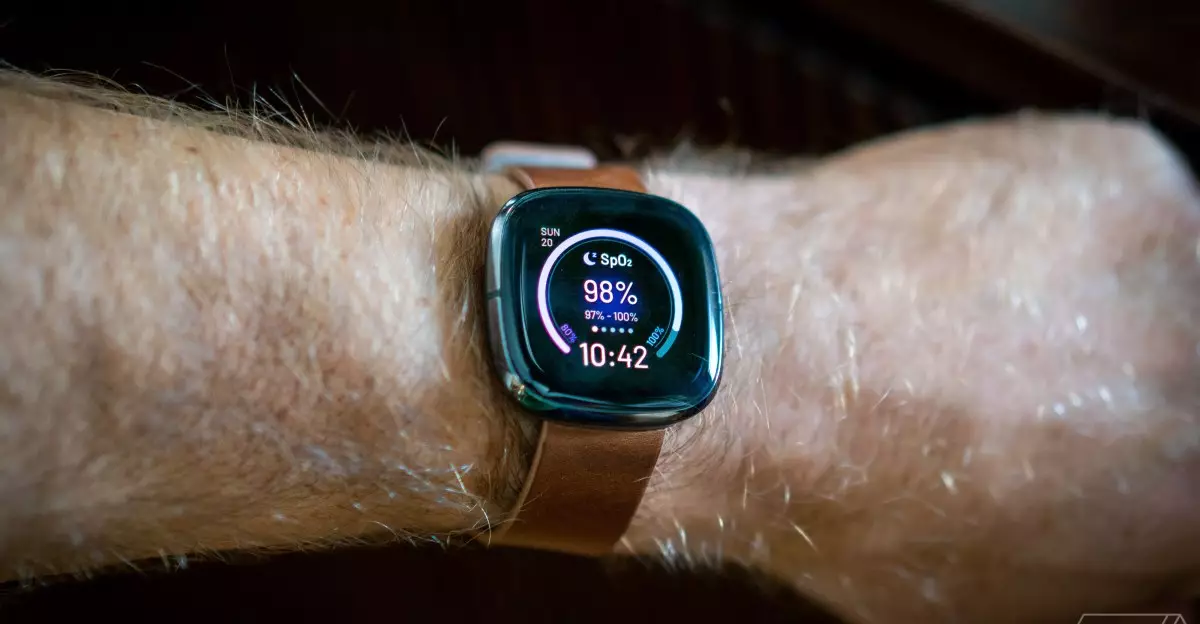In a recent turn of events, many owners of the Fitbit Versa 3 and Sense have expressed their dismay following a mandatory firmware update that has severely impacted battery life. What was initially framed as a precautionary measure to prevent overheating has spiraled into a significant user concern, sparking complaints over diminished functionality and customer dissatisfaction. Despite the clear necessity of addressing battery safety, the execution of this update raises questions about both the effectiveness of the solution and Fitbit’s commitment to customer experience.
The firmware update was prompted by reports of overheating batteries in a “limited number” of devices, according to Google, which owns Fitbit. The update, aimed at minimizing risks associated with overheating, inadvertently resulted in a dramatic reduction of battery life post-update. Users who previously enjoyed multiple days of usage are now grappling with devices that barely make it through a single day. This shift highlights an essential dilemma in tech products’ management—the fine balance between safety and performance. In this case, it appears that safety was prioritized to an extent that compromised the product’s usability.
Users have been vocal about their frustrations, taking to forums and social media to share their experiences. Many have reported that their devices, which once boasted battery lives of two to six days, now need charging every night. This drastic change has rendered the smartwatches practically unusable for several customers, transforming what was once a highly regarded feature into a significant drawback.
Indeed, tech consumers often opt for devices that promise longevity and reliability. The shift from being able to charge every few days to needing a daily charge not only strains convenience but casts doubt on the product’s utility in a market where users seek functionality that aligns with their lifestyle. Fitbit users, who have traditionally heralded the brand for its endurance, now feel betrayed by a device that no longer delivers on one of its core promises.
The situation has been exacerbated by Fitbit’s response, which has included offering a $50 credit to affected users. While any form of compensation can be appreciated, many customers consider this amount insufficient considering the frustration and inconvenience caused by the update. The response feels particularly inadequate against the backdrop of an emerging pattern: a string of incidents involving Fitbit devices and overheating issues. This isn’t the first time that battery performance has come under scrutiny, following a $12 million fine due to battery-related burns experienced by users of its Ionic watches. User confidence in the Fitbit brand is understandably waning, sentiments that are only reinforced by this latest development.
Moreover, the context of Google’s actions in relation to other products adds another layer of scrutiny. The tech giant also issued a firmware tweak for its Pixel 4A smartphone, capping battery performance and offering a more substantial $100 credit, highlighting perceived inconsistencies in how customer grievances are being addressed across products.
Lurking beneath the current crisis is a plethora of complaints that have permeated user forums for years, particularly around battery issues, skin irritation, and challenges with customer support. The repeated nature of these issues reflects an ongoing struggle that predates the acquisition of Fitbit by Google. Users are left questioning whether their grievances will ever reach fruition or yet again be swept under the rug. The firmware update is a recent manifestation of an underlying problem that many hope could have been effectively resolved with improved product testing or user feedback integration.
Fitbit’s transition under Google’s ownership has not been seamless, with many long-term users expressing dissatisfaction with the direction of the brand. As the tech sector becomes increasingly competitive, the pressure to innovate while ensuring user safety grows ever deeper. Yet in this instance, it seems that the fundamental purpose of fitness and health wearables—offering empowerment through technology—has taken a backseat to reactive measures that ultimately impair usability.
The recent developments surrounding the Fitbit Versa 3 and Sense firmware update serve as a sobering reminder of the complex nature of technology and consumer expectations. As manufacturers grapple with safety and performance concerns, users hope for a return to the principles that first attracted them to the brand—a device that enhances their lives without compromising functionality. Only time will tell if Fitbit can rectify these issues and restore the faith of its user base.

